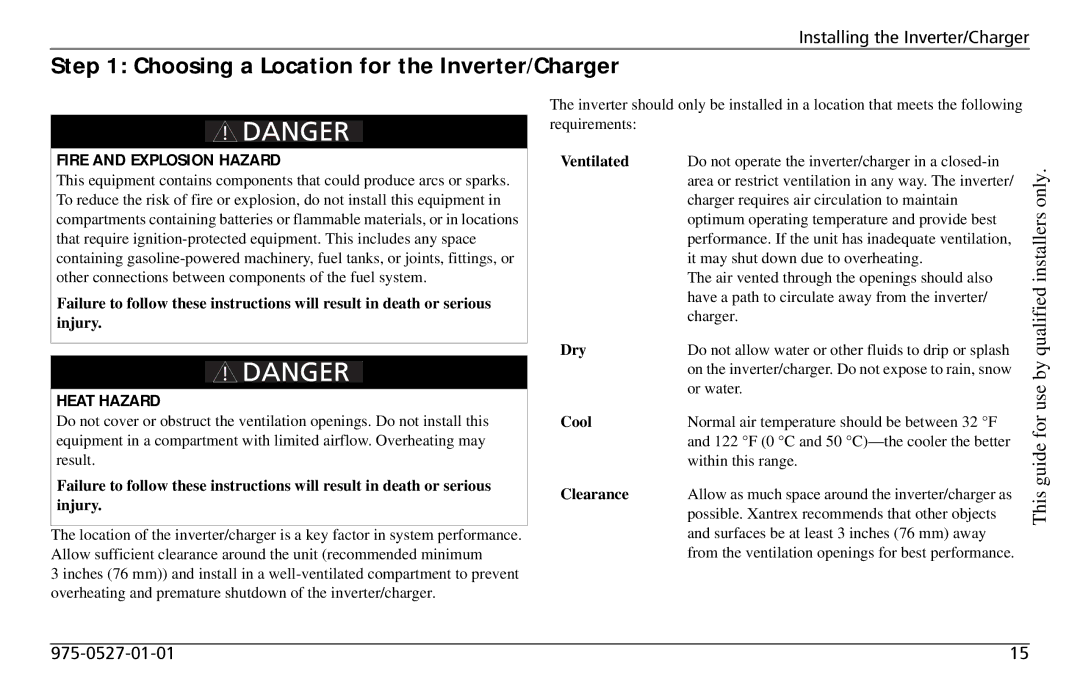
Installing the Inverter/Charger
Step 1: Choosing a Location for the Inverter/Charger
FIRE AND EXPLOSION HAZARD
This equipment contains components that could produce arcs or sparks. To reduce the risk of fire or explosion, do not install this equipment in compartments containing batteries or flammable materials, or in locations that require
Failure to follow these instructions will result in death or serious injury.
HEAT HAZARD
Do not cover or obstruct the ventilation openings. Do not install this equipment in a compartment with limited airflow. Overheating may result.
Failure to follow these instructions will result in death or serious injury.
The location of the inverter/charger is a key factor in system performance. Allow sufficient clearance around the unit (recommended minimum
3 inches (76 mm)) and install in a
The inverter should only be installed in a location that meets the following requirements:
Ventilated | Do not operate the inverter/charger in a | only. | |
| area or restrict ventilation in any way. The inverter/ | ||
| charger requires air circulation to maintain | ||
| optimum operating temperature and provide best | installers | |
| The air vented through the openings should also | ||
| performance. If the unit has inadequate ventilation, |
| |
| it may shut down due to overheating. | qualified | |
Dry | Do not allow water or other fluids to drip or splash | ||
| have a path to circulate away from the inverter/ |
| |
| charger. |
| |
| on the inverter/charger. Do not expose to rain, snow | by | |
| or water. | use | |
Cool | Normal air temperature should be between 32 °F | ||
for | |||
| and 122 °F (0 °C and 50 | ||
| guide | ||
| within this range. | ||
|
| ||
Clearance | Allow as much space around the inverter/charger as | This | |
| possible. Xantrex recommends that other objects | ||
|
| ||
| and surfaces be at least 3 inches (76 mm) away |
| |
| from the ventilation openings for best performance. |
|
15 |
